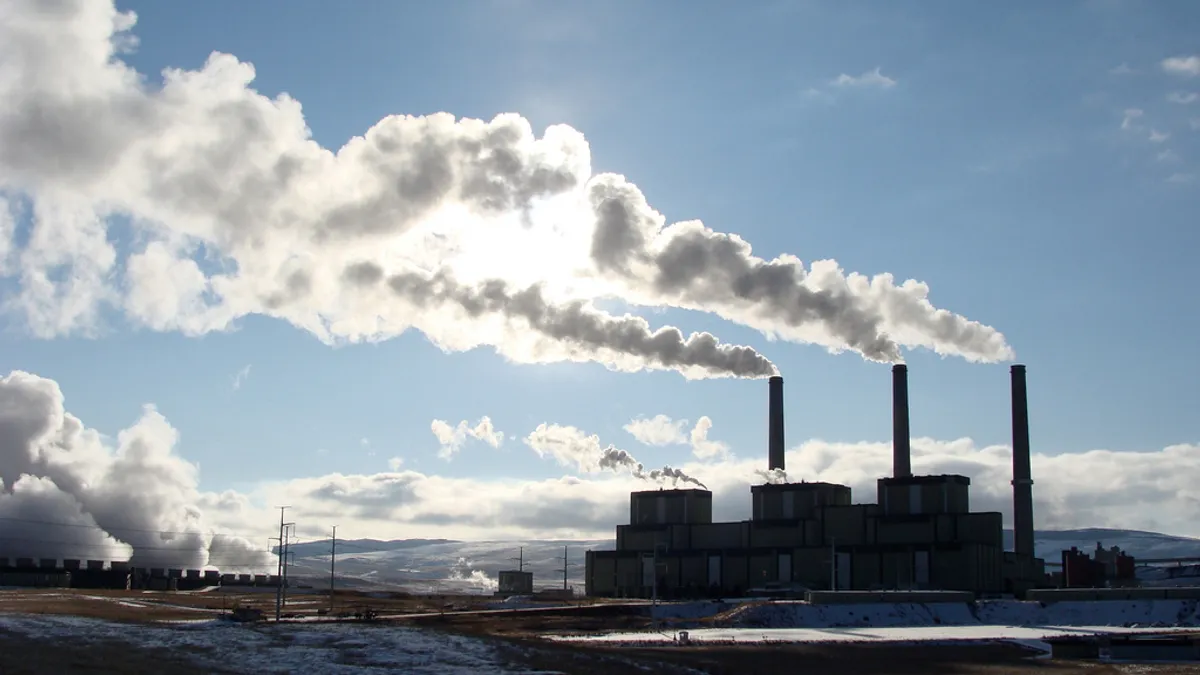Dive Brief:
- Tri-State Generation and Transmission Association on Wednesday announced it will develop an "aggressive" Responsible Energy Plan aimed at reducing the carbon emissions of its generation fleet while also cutting costs and ensuring reliability.
- Tri-State's generation mix is about 50% coal, and it has faced criticism from member utilities who see cheaper and cleaner energy available in wholesale markets. Officials say development of the plan is being driven by a range of factors, including new state carbon reduction goals and renewable energy requirements.
- Tri-State plans to develop its new energy plan through a stakeholder process that will be facilitated in part by the Center for the New Energy Economy at Colorado State University.
Dive Insight:
It has been a tumultuous stretch for Tri-State, but the generation provider now says its "proactive agenda will address electric industry challenges and cooperative utility needs."
Some of Tri-State's 43 members have been looking to exit, asking for cost estimates to buy out of their contracts. The utility is also facing a potential restraining order from one of its members related to its attempts to become federally-regulated — a move which would avoid state regulation of its rates.
The generation provider also recently rebuffed an offer from Guzman Energy to help it replace its coal generation. And last year, it was the subject of a Rocky Mountain Institute (RMI) study that concluded the utility's 1 million consumers could save more than $600 million through 2030 by retiring some plants and adopting renewables.
But there have also been positive signs for Tri-State, including a potential settlement with Delta-Montrose Electric Association (DMEA) to address buyout costs. That settlement is expected to be filed this week with Colorado regulators. And earlier this year, Tri-State announced it is adding an additional 100 MW of solar and 104 MW wind to its resource portfolio.
RMI Principal Mark Dyson, who co-authored last year's study, said the announcement suggests the utility "is beginning to acknowledge the broad utility industry consensus" that there can be cost savings associated with lower-carbon energy sources.
"Exploring this cost-savings opportunity was the core recommendation of our analytical study last year," Dyson said in an email to Utility Dive. "The implementation details, when they are available, will tell how much of this opportunity they intend to pursue."
Earlier this year, Guzman said it had offered to assist Tri-State with a "large-scale, transformative, economic proposal" that included the closure of three coal-fired units.
"Our board has reviewed Guzman’s proposal and determined that we can best achieve our goals at a lower cost through our cooperative business model, and not through a for-profit third-party," Tri-State spokesperson Lee Boughey told Utility Dive.
The utility says it has been working to reduce its coal use by accessing market power "when advantageous." The G&T is retiring Unit 1 of its Craig Station by the end of 2025 as well as its 100 MW Nucla station in early 2020 "following the exhaustion of its on-site fuel supply." The Nucla plant was originally planned to retire at the end of 2022.
And Tri-State said its membership is currently considering "greater contract flexibility," that could include partial requirements contracts, allowing for more local renewable energy projects.
"Our members are fully engaged and driving the changes at Tri-State," Tri-State spokesperson Lee Boughey told Utility Dive.
DMEA had no comment on the plan, other than that it "is focused on our settlement negotiations with Tri-State."
La Plata Electric Association, which is also exploring exiting Tri-State's service, did not respond to requests for comment.















